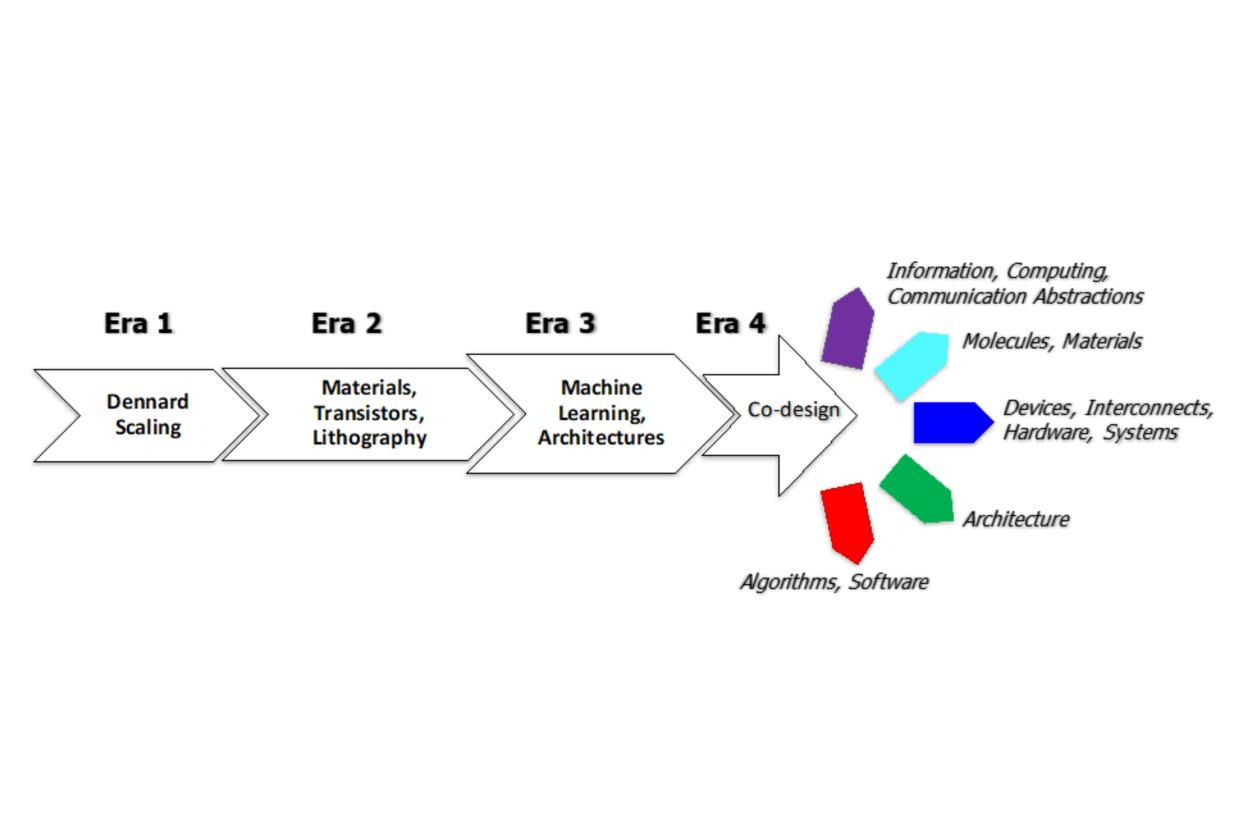About SLAC Microelectronics
Co-design and Microelectronics
From Atoms to Architecture and Algorithms

The vision of Microelectronics by Co-design is to address multiple aspects including practical realization of new and novel architecture concepts for designing new computing systems.
In the upcoming new era for computing, co-design is expected to include architectures, hardware, software, and devices, basic computing/communication abstractions, and atoms (in the choice of molecules and materials).
This in turn expands the scope of computing and bridges abstractions with a system-level application. This framework should be able to use these building blocks to design a computing system for existing or new applications, which determine the domain for which computing itself is formulated and can span the spectrum from High Performance Computing to low power including applications that have not been realized yet.
Working across the stack in applications, systems software and hardware creates opportunity for innovative Co-design, but also requires a disciplined process to manage the very different kinds of people and knowledge across the breadth of the effort.
Fast combinatorial exploration using advanced machine learning methods can help understand absolute limits imposed by physics and materials. At the physical limit, non-scalable manufacturing and characterization techniques now reach to the atomic scale through taking advantage of pathways such as surface chemistry and beam-based manipulation in the national laboratories.
These create the opportunity to characterize and manipulate, from the ground up, the parameters that underlie the principles of operation of current-day devices. At the lower levels of the framework, this requires physical experimentation, as a pure modeling and simulation approach is often computationally untenable for new materials and devices.
The design methodologies will demonstrate top-down (from application over system and architecture to information processing platforms) and bottom-up (from information processing to computing systems) pathways.


